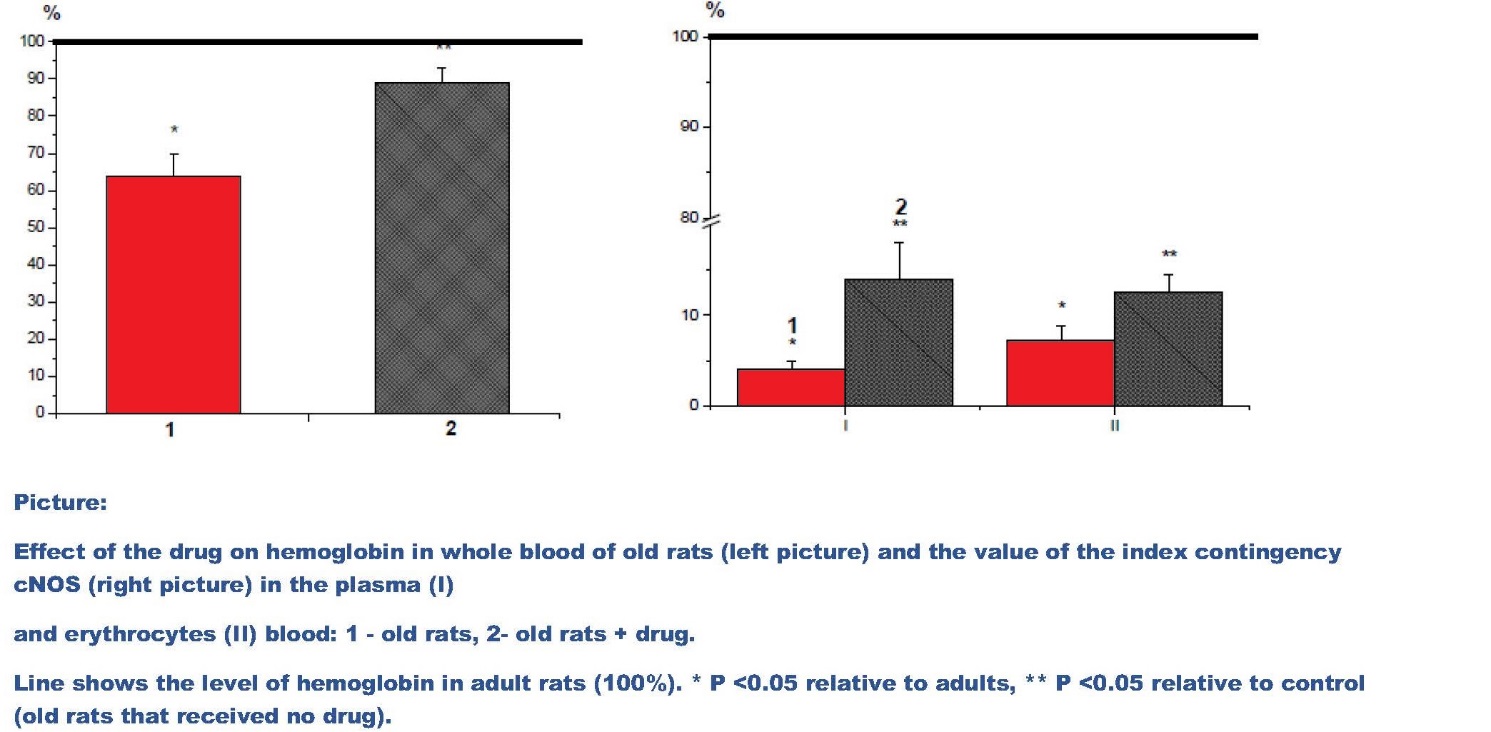Для інвесторів
Product to increase the level of hemoglobin (Hb) in the blood.
REDUCING RESISTANCE TO ACID HEMOLYSIS BY IRON-CONTAINED DRUG INCREASES THE LEVEL OF HEMOGLOBIN IN THE ERYTHROCYTES OF AGING ANIMALS
In experiments in vivo we studied the effect of chronic ironcontained drug (Urfuhem) supplemention on the level of hemoglobin (Hb) in the blood of aging rats. To establish the biochemical mechanisms of drug action it were determined the parameters of oxidative/nitrosative stress and the hydrogen sulfide level in plasma and erythrocytes, the level of non-heme iron in plasma and erythrocytes sensitivity to acid hemolysis. It was found that in aging rats the drug significantly increases the Hb content of red blood cells and reduces its resistance to acid hemolysis. After the drug supplemention the rate of superoxide anion-radical (*O2-) generation in erythrocytes and stable hydrogen peroxide (H2O2) content both in plasma and erythrocytes were down-regulated.

The drug did not reduce the high levels of generation of the hydroxyl radical (*OH) and high levels of excess NO de novo synthesis by iNOS in erythrocytes but reduced the pools of nitrate anion (NO3-) and its reutilization for NO synthesis. After the drug supplemention the rate of constitutine NO synthesis by cNOS in aging rats plasma was up-regulated perhaps by cNOS coupling. The results indicate that the reason for increasing the permeability of the proton (H+) in red blood cells that causes the acid hemolysis in aging rats after the drug supplemention can be change in the balance of levels of oxidative and nitrosative stress in red blood cells in favor of the latter, and that toxic *OH generation is not at the expense of the classical Fenton reaction in the presence of iron ions (Fe2+), but due to the formation and decomposition of peroxynitrite (ONOO-).
Conclusion: the drug Urfuhem that older animals used for 14 days increased on 40 % hemoglobin and calcium proton exchange rate, resulting in resistance to acid hemolysis of red blood cells decreased.


